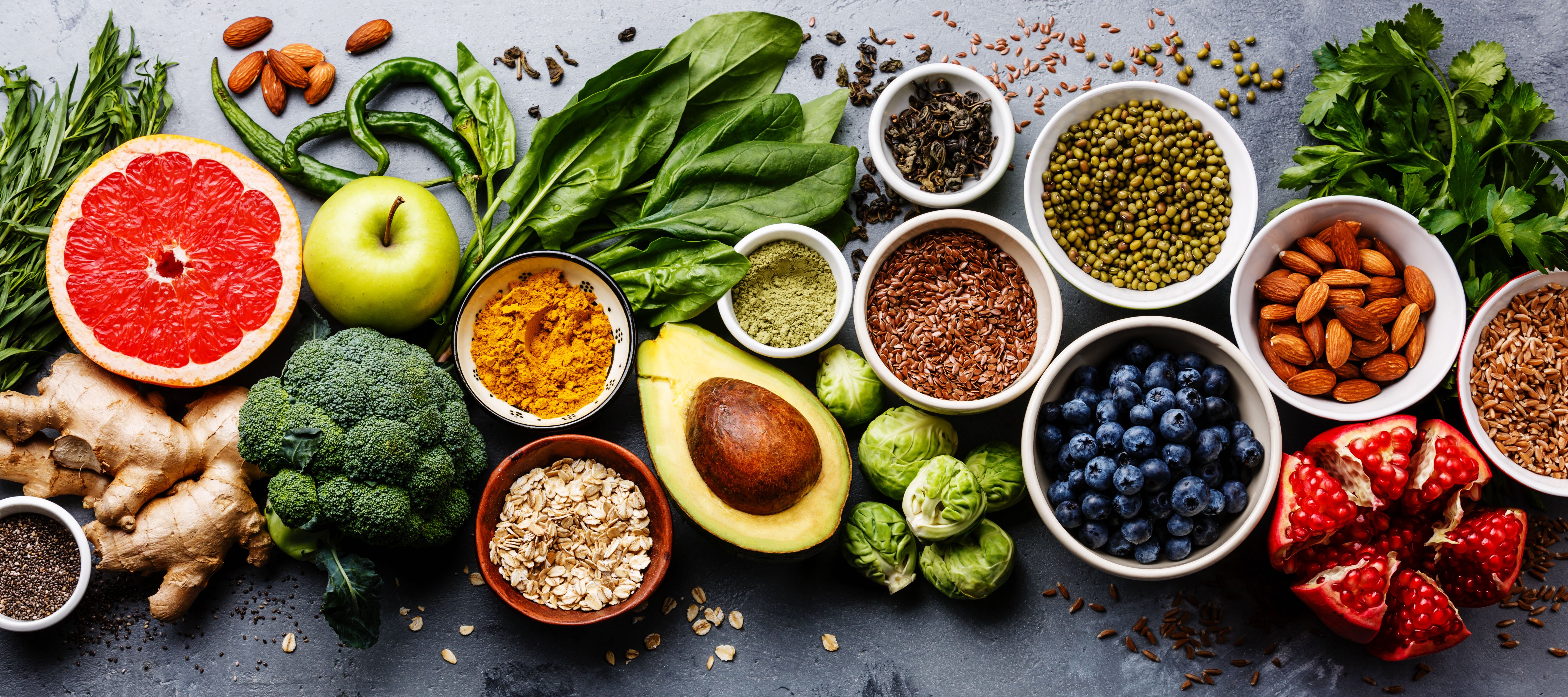Advanced LC×LC–MS Technique for Food Analysis: Insight into Natural Products
Paola Dugo from the University of Messina in Italy, presented her keynote lecture at HPLC 2023 on a cutting-edge method that combines two-dimensional liquid chromatography (LC×LC) with mass spectrometry (MS) to analyze complex food and natural product samples (1). This technique offers unparalleled selectivity and sensitivity, allowing for the detection and discovery of minor bioactive components. She demonstrated the successful application of reversed-phase × reversed-phase and hydrophilic interaction liquid chromatography (HILIC) × reversed-phase approaches, alongside the focusing modulation strategy, to achieve precise separations and accurate quantification. The findings establish LC×LC–MS as an invaluable tool for the qualitative and quantitative assessment of natural products, paving the way for enhanced food analysis.
Healthy food clean eating selection: fruit, vegetable, seeds, superfood, cereal, leaf vegetable on gray concrete background | Image Credit: © Natalia Lisovskaya - stock.adobe.com

Dugo highlighted the significance of employing microLC in the first-dimension separation to achieve reliable and consistent retention times. The quantification was performed using external calibration curves, and the method's validity was confirmed by satisfactory limits of detection (LODs), limits of quantification (LOQs), as well as high intraday and interday precision and recovery values.
The novel LC×LC approaches, coupled with MS, demonstrated potential for the comprehensive analysis of complex food and natural product samples. These techniques offer enhanced separation capabilities, enabling the detection and identification of minor bioactive components that are challenging to isolate using LC methods. By employing focusing modulation, precise separations were achieved, ensuring accurate identification and quantification of the target compounds. The incorporation of microLC in the first-dimension separation not only improved the reliability of the retention times but also contributed to the overall stability of the method. The validation of the approach yielded satisfactory results, confirming its suitability for the qualitative and quantitative evaluation of natural products. Overall, this advanced LC×LC–MS technique provides a powerful tool for researchers and food analysts to gain comprehensive insights into the complex composition of natural products and improve the understanding of their bioactive properties.
Reference
(1) Dugo, P. Comprehensive Two-Dimensional Liquid Chromatography Coupled to Mass Spectrometry for Food Analysis. Presented at: HPLC 2023. June 18–22, 2023. Duesseldorf, Germany. KN40.
Analytical Challenges in Measuring Migration from Food Contact Materials
November 2nd 2015Food contact materials contain low molecular weight additives and processing aids which can migrate into foods leading to trace levels of contamination. Food safety is ensured through regulations, comprising compositional controls and migration limits, which present a significant analytical challenge to the food industry to ensure compliance and demonstrate due diligence. Of the various analytical approaches, LC-MS/MS has proved to be an essential tool in monitoring migration of target compounds into foods, and more sophisticated approaches such as LC-high resolution MS (Orbitrap) are being increasingly used for untargeted analysis to monitor non-intentionally added substances. This podcast will provide an overview to this area, illustrated with various applications showing current approaches being employed.
LC–MS/MS-Based System Used to Profile Ceramide Reactions to Diseases
April 26th 2024Scientists from the University of Córdoba in Córdoba, Spain recently used liquid chromatography–tandem mass spectrometry (LC–MS/MS) to comprehensively profile human ceramides to determine their reactions to diseases.
High-Throughput 4D TIMS Method Accelerates Lipidomics Analysis
April 25th 2024Ultrahigh-pressure liquid chromatography coupled to high-resolution mass spectrometry (UHPLC-HRMS) had been previously proposed for untargeted lipidomics analysis, but this updated approach was reported by the authors to reduce run time to 4 min.